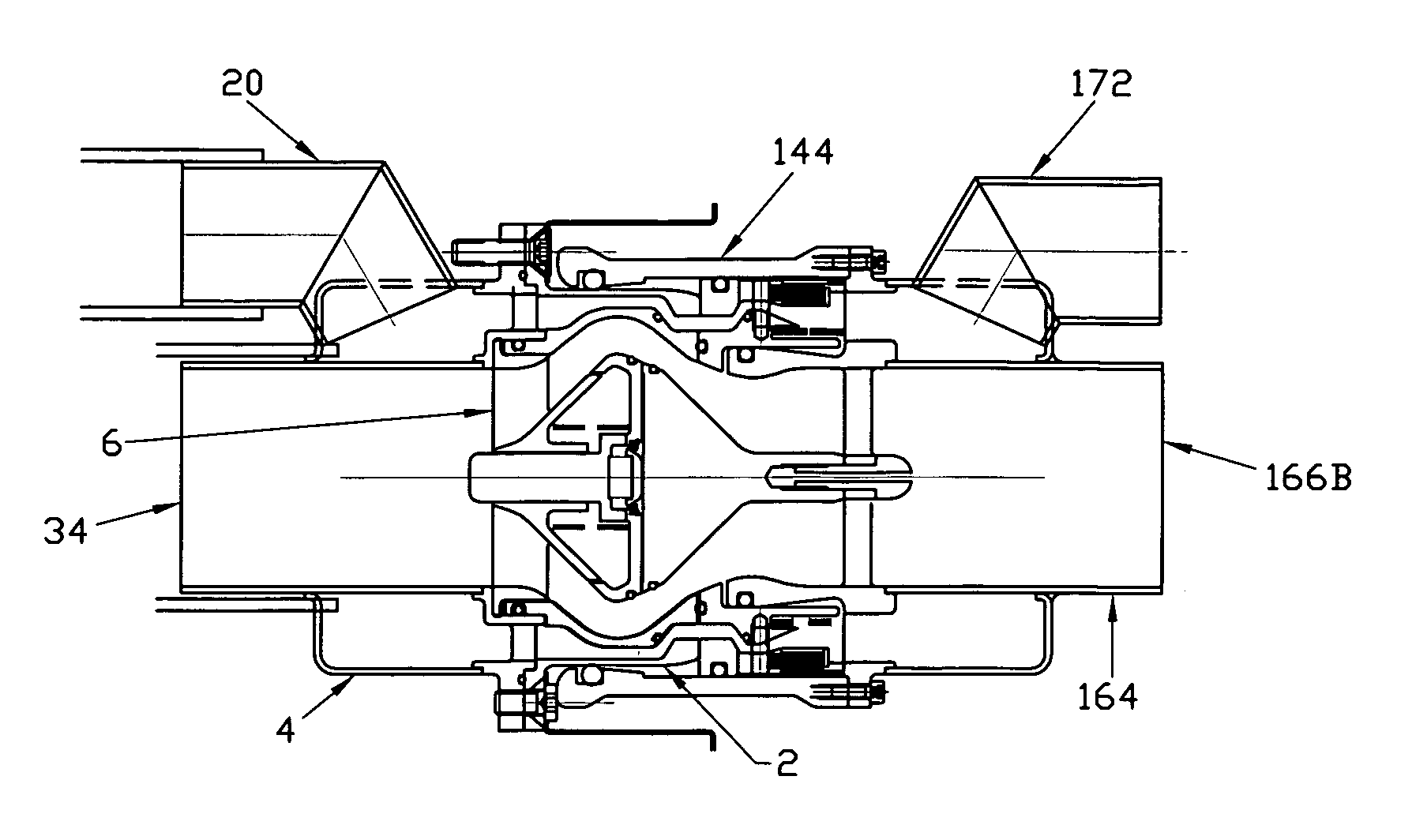Fuel transfer coupling
a fuel transfer and coupling technology, applied in the field of couplings, can solve the problems of large volume of gasoline spilled onto the pavement and portions of the vehicle being refueled, immediate health risks to pit crew personnel other than fire hazards, and the issue of tetraethyl lead and related compounds as health hazards to pit crews
- Summary
- Abstract
- Description
- Claims
- Application Information
AI Technical Summary
Benefits of technology
Problems solved by technology
Method used
Image
Examples
Embodiment Construction
[0074]A fuel transfer coupling according to the present invention comprises an on-board portion which is in fluid contact with the gasoline tank on a motorized vehicle such as a race car, and a remote portion which is in fluid contact with a source of liquid hydrocarbon fuel that is to be delivered to the gasoline tank of the motorized vehicle. The on-board portion may be referred to as the male adapter and the remote portion of the coupling may be referred to as the female adapter, for convenience.
[0075]Referring to the drawings, and initially to FIG. 1 there is shown the on-board portion of a fuel transfer coupling according to the invention in an exploded view, including all of its various components, which are described forthwith.
[0076]In FIG. 2 is shown a perspective view of the male adapter base 4. The male adapter base 4 includes a central bore 34 through which fuel is intended to flow. The central bore 34 has a first end portion which is adapted to be connected to the inlet ...
PUM
 Login to View More
Login to View More Abstract
Description
Claims
Application Information
 Login to View More
Login to View More - R&D
- Intellectual Property
- Life Sciences
- Materials
- Tech Scout
- Unparalleled Data Quality
- Higher Quality Content
- 60% Fewer Hallucinations
Browse by: Latest US Patents, China's latest patents, Technical Efficacy Thesaurus, Application Domain, Technology Topic, Popular Technical Reports.
© 2025 PatSnap. All rights reserved.Legal|Privacy policy|Modern Slavery Act Transparency Statement|Sitemap|About US| Contact US: help@patsnap.com



